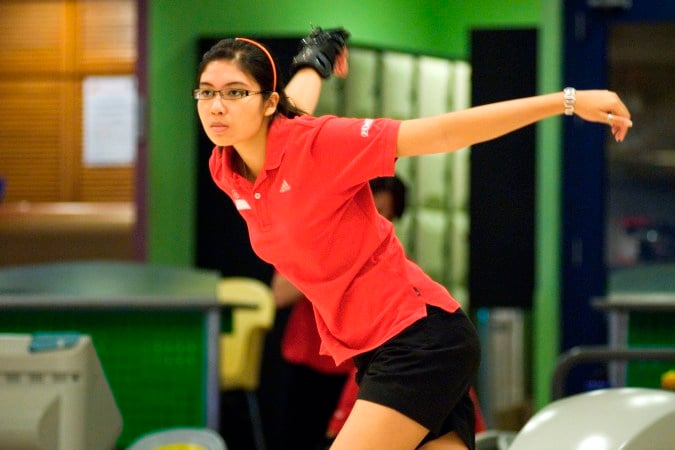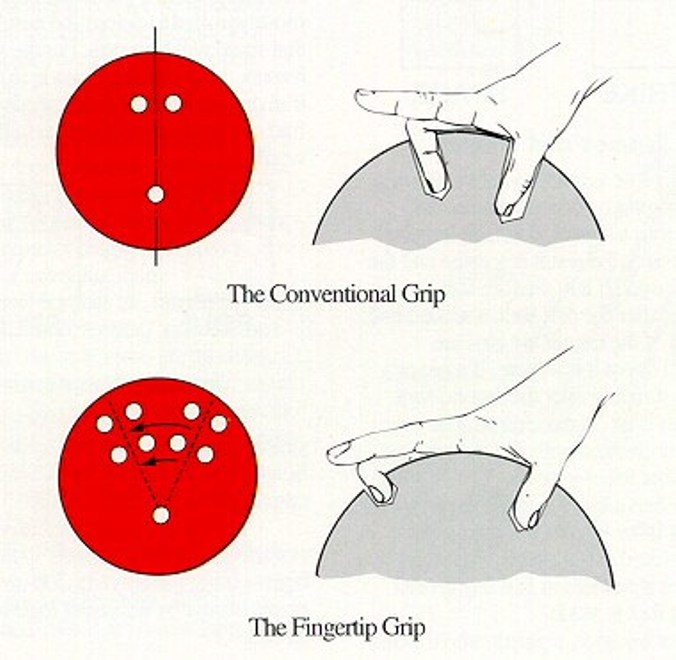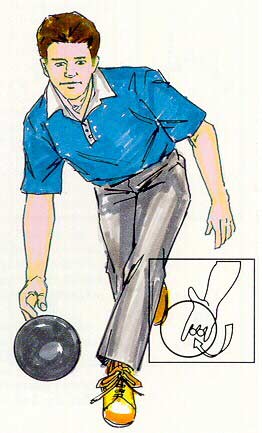How do I make a bowling ball curl (hook)?

File photo credit: SportSG
MASTER YOUR BOWLING TECHNIQUE (2): THE HOOK
Curling (more commonly known as hooking) a bowling ball can be one of the most spectacular shots in the game.
Although it is generally more difficult to hook the ball, compared to spinning or throwing straight, it is the most common style used by professionals due to the power and spin action it generates.
Depending on your strength and bowling ball, there are varying results when doing a hook. Some hook balls achieve very minimum curl (2-5 boards), while a more dramatic hook can appear to be thrown all the way from one end of the lane before curling back to the centre. Regardless, the basic technique remains the same.
The Bowling Ball
The type of hook you’re able to achieve depends much on the type of bowling ball used. While some bowlers are able to achieve some form of hook with a house ball (typically made of polyester or plastic), this requires an over-exertion of power and is difficult to replicate on a continuous basis.
If you want to get on the fast track to throwing a hook, you're going to need a reactive resin or particle ball. Reactive-resin balls start around $100 and go up from there, though some, as well as particle balls, may cost several hundred dollars.
Reactive balls have a porous surface that is meant to grip the lane and provide the traction through the lane oil that you need for your ball to hook. Plastic balls are much harder and smoother than reactive balls so they won't be able to get the same traction.
Once you’ve gotten a reactive ball, the next step is to drill holes according to your finger size. Preferably, you should use the fingertip grip. Take your ball to a pro shop and have an expert measure your hand and drill your ball. Most stores include free drilling with the purchase of a ball.
File photo credit: http://uarkpeac.pbworks.com/
Mastering The Technique
If you’ve been playing straight ball at a decent level all your life, your approach and backswing should be near identical to before. Just remember to time your footwork and swing well, keep your shoulders facing forward, have your arms completely straight during the swing and then focus on the release.
In order to create revolutions, there are a few things that must happen at the point of release.
1. Exiting of the thumb from the bowling ball
2. Lifting with the fingers
3. Counter-clockwise rotation of the hand and wrist (Clockwise for Lefties)
File photo credit: http://www.tweedtenpin.com.au/
It is important to learn to relax your thumb at the point of release. Your thumb should exit the ball first, leaving your two bowling fingers to control the hook of the ball. This promotes lift, rotation and most important – accuracy.
The next step is really where the revolutions are created. When releasing the ball, you should naturally flick your fingers as you let go. At the point where you feel your thumb exiting the ball is when you start to lift with your fingers. Try to feel the ball on the tips of your fingers and lift as you're getting ready to release the ball.
The final step goes hand in hand with the previous step. As you're lifting with your fingers, you should rotate your hand and wrist counter-clockwise to the handshake position. Follow through by directing your ball and make sure it remains in the same position to avoid injuries.
A good way to practice this technique is by practicing it with a tennis ball. You want to create an underhand spiral with your throw; and if you get it right, it'll go straight and then bounce drastically to the side.
General tips
The hook ball requires lots of practice. Visualise the motion in your head and try it out numerous times without the ball. Most bowlers start with small curves before advancing to the more dramatic hooks. The more severe the curve, the more power is generated - but the risks are also greater. Ultimately, achieving consistency is much better than looking good.
To receive the latest updates on the happenings in the Singapore sports scene, or to find out more about some of the latest programmes on offer at ActiveSG, like our Facebook page here.




![ActiveSG Academies and Clubs Logo (Solid Colour)[8647]](https://www.activesgcircle.gov.sg/hs-fs/hubfs/ActiveSG%20Circle%202023Theme/images/ActiveSG%20Academies%20and%20Clubs%20Logo%20(Solid%20Colour)%5B8647%5D.png?width=150&height=65&name=ActiveSG%20Academies%20and%20Clubs%20Logo%20(Solid%20Colour)%5B8647%5D.png)



-01.png?width=200&height=141&name=Team%20Singapore%20Logo%20(Red)-01.png)



